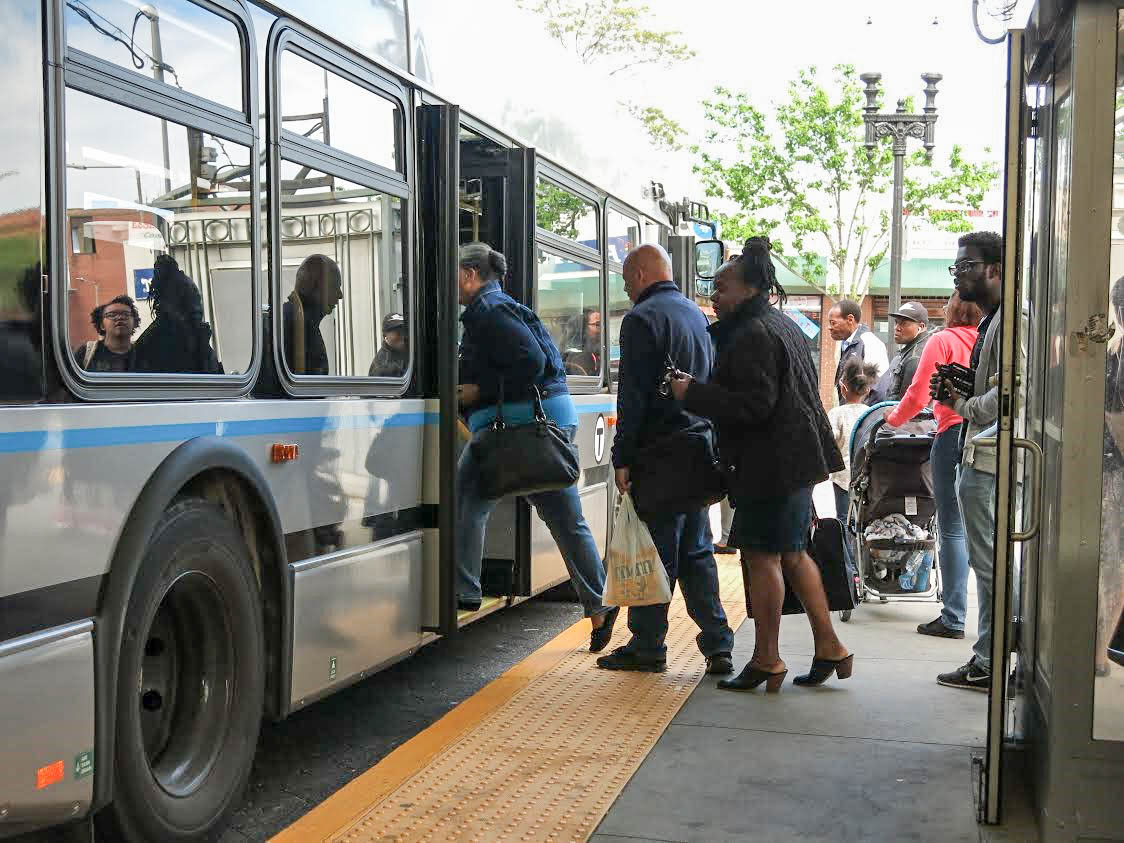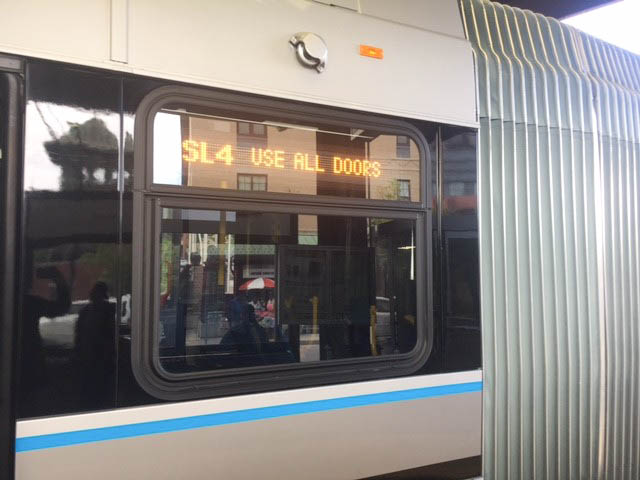Allowing passengers to board a bus at any door (front, back, middle) and pre-pay are basic elements of BRT. These elements are also the foundation of good bus service generally as seen in best practice cities around the world. Yet only a handful of U.S. cities have managed to integrate all-door boarding and pre-paying in their service offer. Bus user sense of comfort and overall experience, both perceived and actual, can be improved by eliminating queuing at the front door and streamlining ease of payment.
All-door boarding and pre-paying can be found in bus service designs in New York, San Francisco, and Seattle. These cities, in addition to Los Angeles, Montreal (Canada), and now Sydney (Australia) all started by piloting bus improvement elements before making them permanent. Slight travel time savings in many of the cases led to overwhelming reports of improved rider satisfaction. Even so, these elements are not always systemwide along all routes of the bus network–as in the case of New York where it is only possible to pre-pay and board at any door on routes known as Select Bus Service, which use articulated buses and have payment kiosks at various stops.

Photo source: Boston In
Given the promise these elements offer for better bus service, which are fundamental and commonplace elsewhere, Boston embarked on demonstrating to riders how such improvements could dramatically change the daily commute with the hope of inspiring passengers to embrace local efforts of bringing the country’s first Gold-Standard BRT to Boston.
The Silver Line 4/5, one of the Boston region’s most used, allowed all-door boarding during a two-week demonstration aimed to improve the real and perceived user experience. The demo routes carry among the most passengers in the entire bus system in the Boston region every day and delays are worst at the most crowded bus stops, resulting in bottlenecks getting on the bus.
Fares during the two week experiment were paid by the Barr Foundation, allowing riders to understand how these two simulated elements are not just accessories but fundamentals of a superior bus experience. Instead of queuing at the front door, topping up their Charlie Cards (the local transit smartcard) and interacting with the driver about fare payments, people were able to get on the bus quickly–boarding at whichever door was less crowded.
The main idea of the demo was to get bus riders to experience first-hand key features of Gold Standard BRT. While the next generation of automated fare collection is planned for the Boston region in the coming years, making these features hallmarks of new and improved bus service, the two week demo helped the public gain confidence about the transformative potential of permanently bringing all-door boarding and pre-pay to specific routes or the entire bus network.

ITDP was involved in the demo as part of the BostonBRT group in cooperation with the Massachusetts Bay Transportation Authority (MBTA), a public agency responsible for operating public transport services in Greater Boston, and the Boston Transportation Department (BTD) as well as local civil society organizations such as LivableStreets and the Metropolitan Area Planning Council (MAPC).
Bus rider engagement and education was essential to explain how all-door boarding works and to directly showcase the benefits. Outreach materials on the bus and at bus stops reminded riders they could use any door and showcased for the public how the demo fit into a larger vision for public transit innovation in the region. Volunteers surveyed riders about how the changes during the demo impacted their travel time and overall bus experience.
Findings from the demo showed support from riders indicating an improved bus experience and a desire to keep the boarding elements. Results from the demo will be used to further enhance public understanding of better bus service in the region and to experiment with other BRT features . Additional efforts such as the Boston BRT station design competition and the forthcoming piloting of BRT elements in municipalities around the region are all steps toward the implementation of Gold Standard BRT in Massachusetts and perhaps the first in the United States.




